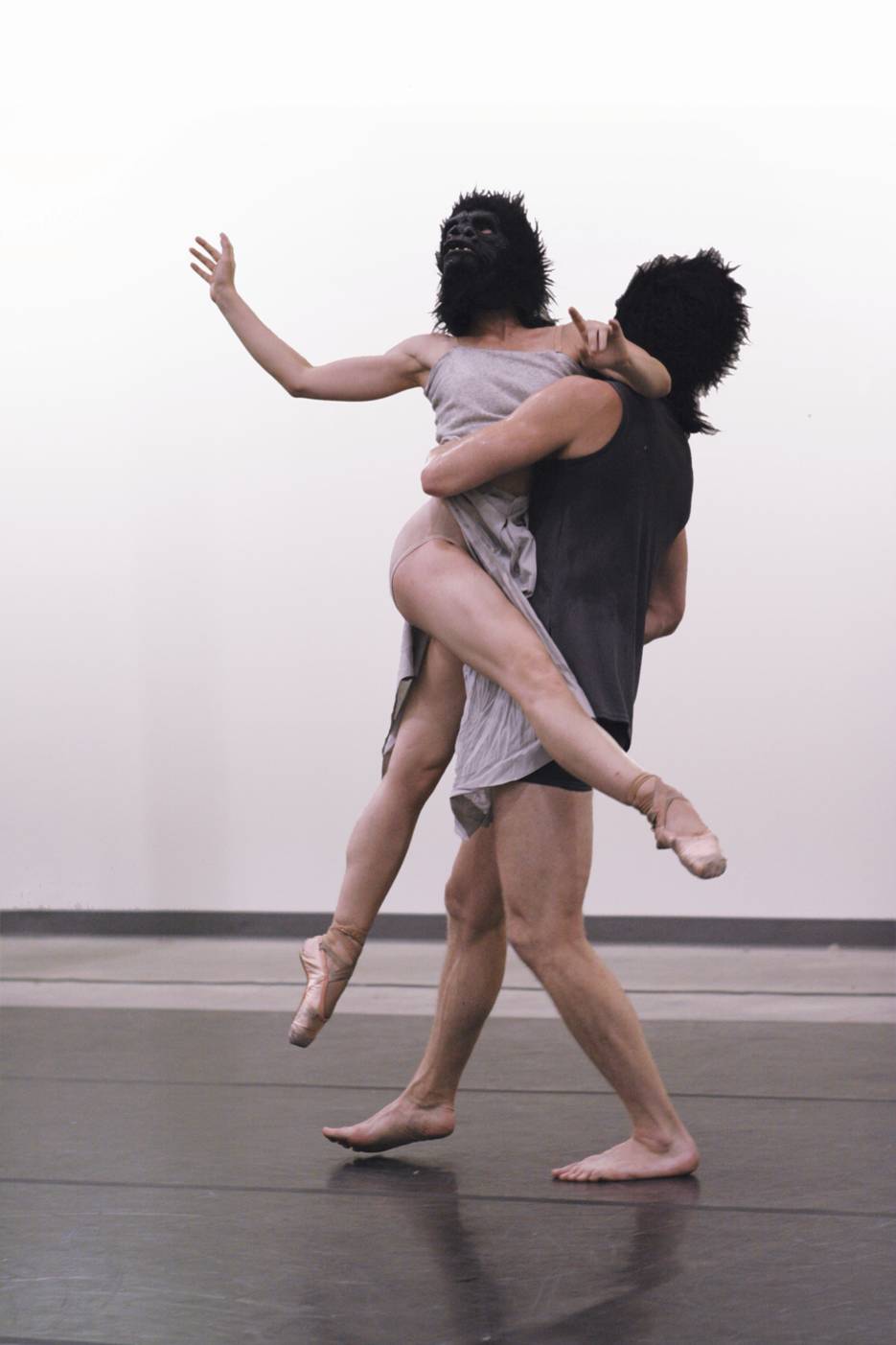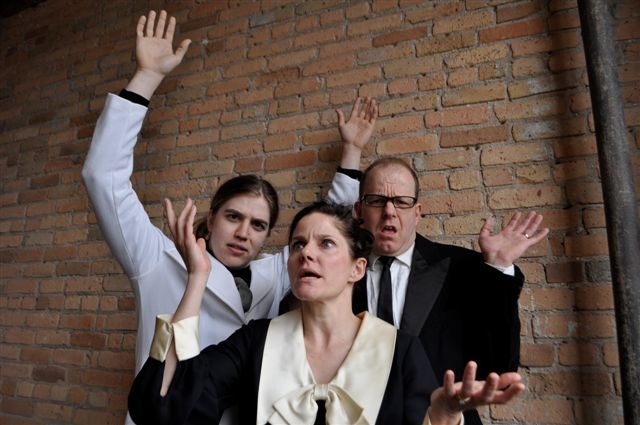The Collision Artists
Lightsey Darst previews two intriguing new dance works by Penelope Freeh and Megan Mayer (both recently named McKnight Fellows) on stage at the Southern June 17 - 19.


ONE WAY TO THINK ABOUT THE CHOREOGRAPHY of Penelope Freeh and Megan Mayer (on view this weekend at the Southern Theater) is that both artists are fascinated by collisions. Some artists build their work from the ground up, methodically adding atom to atom; others build from the sky down, envisioning and then erecting a grand architecture. But the collision artist is a matchmaker and a gambler, pairing this with this just to see what happens. For most people, the moments when things slip apart, when the pieces don’t fit, are unnerving and threatening. But for the collision artist, these slivers of chaos are magic.
Another way to think about the choreography of Freeh and Mayer is to know that both artists have just been awarded McKnight Fellowships — a prestigious prize for Minnesota dance-makers and a marker of who to watch now. With the award, their shared evening at the Southern has gone from being an interesting double bill by two artists in their early mid-careers to a summer must-see.
But back to that idea of collision. The collisions in Freeh’s work are most obviously physical. The clinch might be her basic position, the form she keeps coming back to — the clinch missed, shattered, narrowly avoided, longed for, accidental, fleeting, disastrous, or achieved. Even when her dancers are apart from each other, they’re kinked and crooked like puzzle pieces, broken halves of a larger whole. Take this image from her piece We’ll Survive If We Don’t Protect Ourselves: a backwards running under-the-arm lift, as difficult to describe as a mythical monster, at once uplifting (those sustained jumps) and scary (that barely contained momentum). Or this: Eddie Oroyan balances in a yoga crow pose over the prone Christine Maginnis, then she carries him up as she rises, and then he rolls her up into a high, upside-down lift, all four limbs clawing the air for purchase. Or take the moment when two dancers, one on top of the other, turn for a mystic second into a totem pole, indifferent to each other and yet locked together. Or this: Maginnis, on Oroyan’s shoulders, wraps herself into a ball around his head, then uncurls like a strange pair of antlers.
But it’s not only in the physical realm that Freeh is inspired by collision: the invisible layering of past over present, intention over accident over intention, also stirs her creativity. Consider the evolution of We’ll Survive. The piece, which premiered at the Fringe Festival in 2007, was first created from two earlier duets: one lifted from an earlier work Freeh wasn’t satisfied with, one a response-dance to her own divorce. The last night of rehearsals for We’ll Survive, the night Freeh had to make final cuts and figure out her ending, the 35-W bridge collapsed. Freeh stresses that the piece isn’t about the bridge collapse, but it’s informed by it, “loaded” — in the same way that whatever you were doing at the time will always remind you of that event. For this remounting of the piece, Freeh’s digging into those rich layers of past, seeing them through the now of the rebuilt bridge, of her own remarriage — and giving all this complex “genesis,” as she calls it, to her dancers, “so they can make dramatic choices for themselves.” Freeh’s not interested in flattening down or paring off the associations, the meanings, but in opening them up to chaotic interplay — to the deep blank and sudden sight you can get when you trust chance.
Further layers of complexity are added by a change of cast — Eddie Oroyan stepping in for Nicholas Lincoln, Stephen Schroeder for Eric Boone (Christine Maginnis and Freeh herself remain). And there’s another big change. The work was originally a site-specific piece, performed in the Grain Belt Bottling Center atrium; now it’ll be on the Southern stage. Again, though, Freeh’s not trying to erase that difference, to make the Southern the same as her original location. Instead, her approach to this change might serve as a motto for her work in general. “I want to displace my work,” she says, “and I want to go through the uncomfortable.”
________________________________________________________
For most people, the moments when things slip apart, when the pieces don’t fit, are unnerving and threatening. But for the collision artist, these slivers of chaos are magic.
________________________________________________________
IF MEGAN MAYER WERE A CHEF, she wouldn’t be the type to follow a recipe, or try to offer up a new version of something already named; she’d be the one throwing together exciting ingredients, not sure what she’s serving until it’s done. We tried to throw the light is a case in point: to hear Mayer talk about it, the piece is all in the cast. “I just wanted to invite a bunch of people I like to look at,” she says. This results in a fantastic mix of performers: none of her three leads are dancers in the classic sense of the word, and two are better known for theater; three people in her ensemble have never been on stage before, while others are local stars. But wait, there’s more: “I asked my parents to be in this,” Mayer says, miming putting a gun to her head. To stage a family reunion “feels indulgent,” Mayer admits, but she’s willing to foreground that desire, to take the risk. “I want this and I want to see this” — and what results from the collision of her desires, of reality and desire, is the show.
When I visited rehearsal, Mayer was still deep in the unsifted chaos of that collision. With eleven in the cast, rehearsal scheduling was complex, and improvised sections and live video added to the confusion. But her last (and only other) large-cast stage work, 2009’s I Could Not Stand Close Enough to You, galloped triumphantly to its finish line through similar confusion. “I keep saying I’ll never do it again,” Mayer says — but she’s smiling. Hubbub is clearly her métier.
Mayer’s collisions are all the more kaleidoscopically moving because her favored performers tend to display multiple emotions at once. They’re the contradictory characters, the beautiful girl who won’t stop making funny faces, the authority figure with a core of self-doubt, the ordinary Joe who’s Elvis on the inside. Mayer’s minimal choreography acts almost as litmus paper, through which what’s inside the performers emerges in its full awkward-yet-mesmerizing glory. (You can see the same effect in her various video works, in which site-specific improvisations bring out both character and place.) Everyone does everything differently, and the difference is what you watch — as, for example, in a scene in which everyone walks around, occasionally stopping to make a “calm down” gesture with both hands. One man does it all with a creepy mix of perfunctory absentness and razor timing, like an automaton; one woman watches everyone else the whole time, as if she’s not sure where she should be. Another woman walks like a model and gestures like a QVC jewelry host, but her eyes stay blank; another man just executes the steps and gestures, but looks out at us with the burning conviction of a messiah.
Perhaps Mayer’s interest in the human mess can be traced to her gradual evolution into a choreographer — a path her blue-collar family background didn’t prepare her to take. The desire to be an artist “was in there, it was just kind of terrifying”-a terror that Mayer has never, to her credit, entirely put away, but one she dives right into.
________________________________________________________
Noted performance details:
Penelope Freeh’s We’ll Survive If We Don’t Try to Protect Ourselves and Megan Mayer’s We tried to throw the light; on stage at the Southern Theater in Minneapolis June 17-19 (Thursday, 7:30 pm; Friday & Saturday, 8 pm).
________________________________________________________
About the author: Originally from Tallahassee, Lightsey Darst is a poet, dance writer, and adjunct instructor at various Twin Cities colleges. Her manuscript Find the Girl has just been published by Coffee House; she has also been awarded a 2007 NEA Fellowship. She hosts the writing salon, “The Works.”